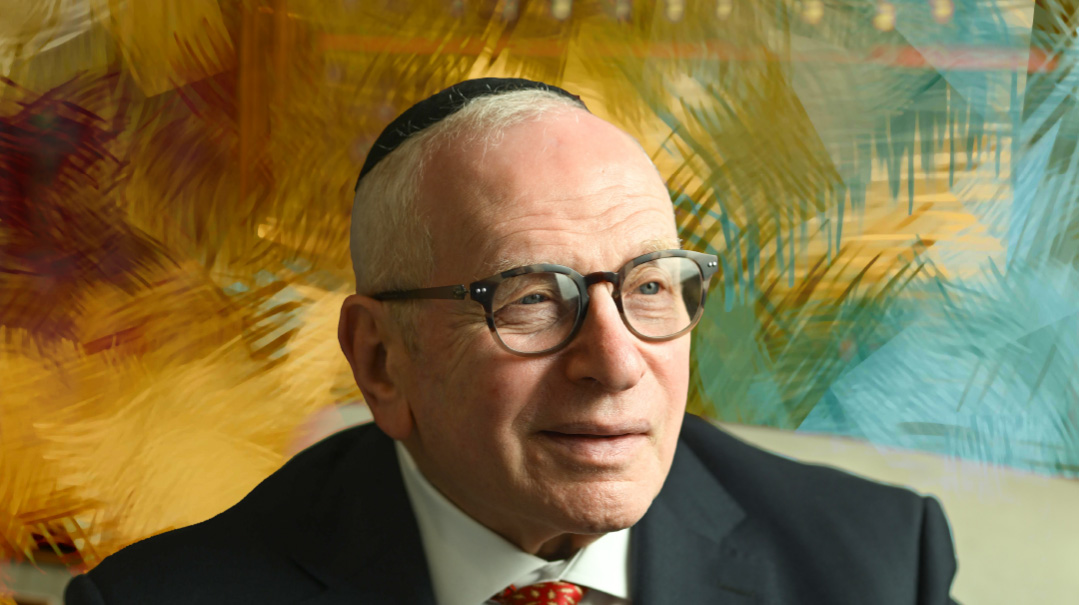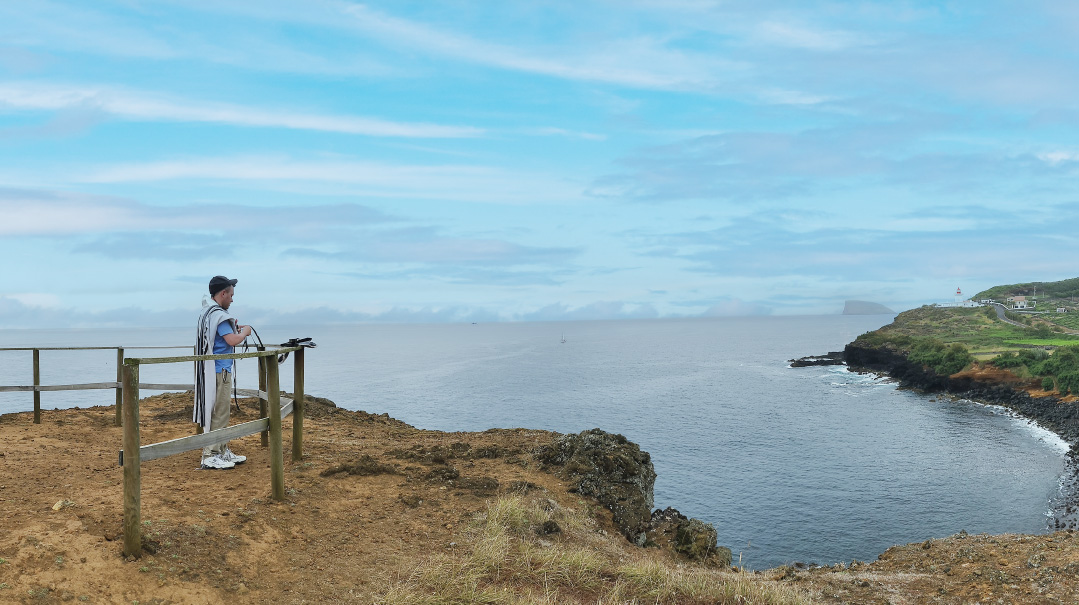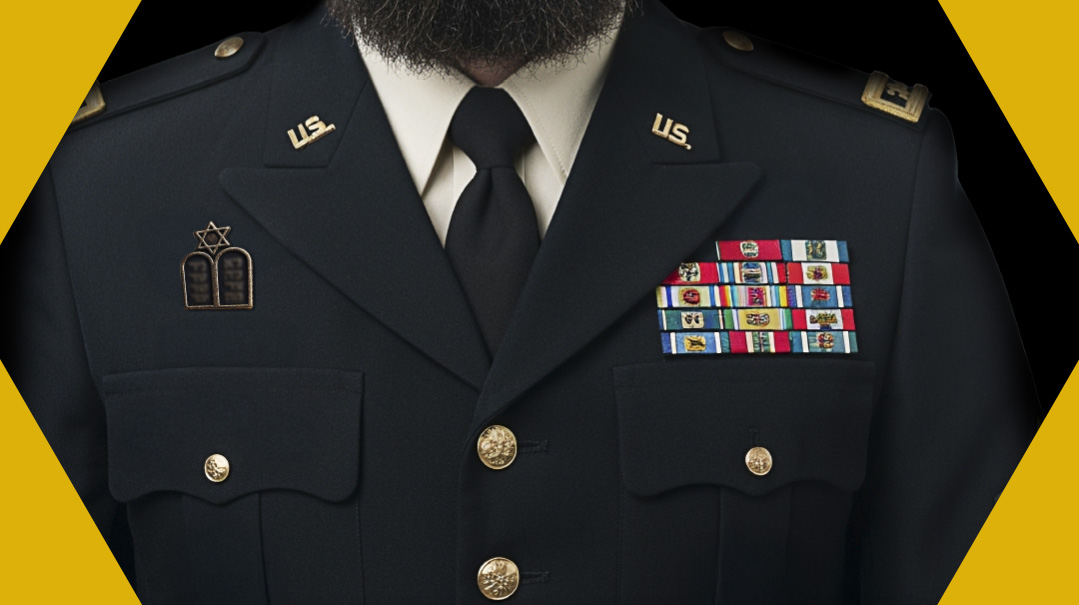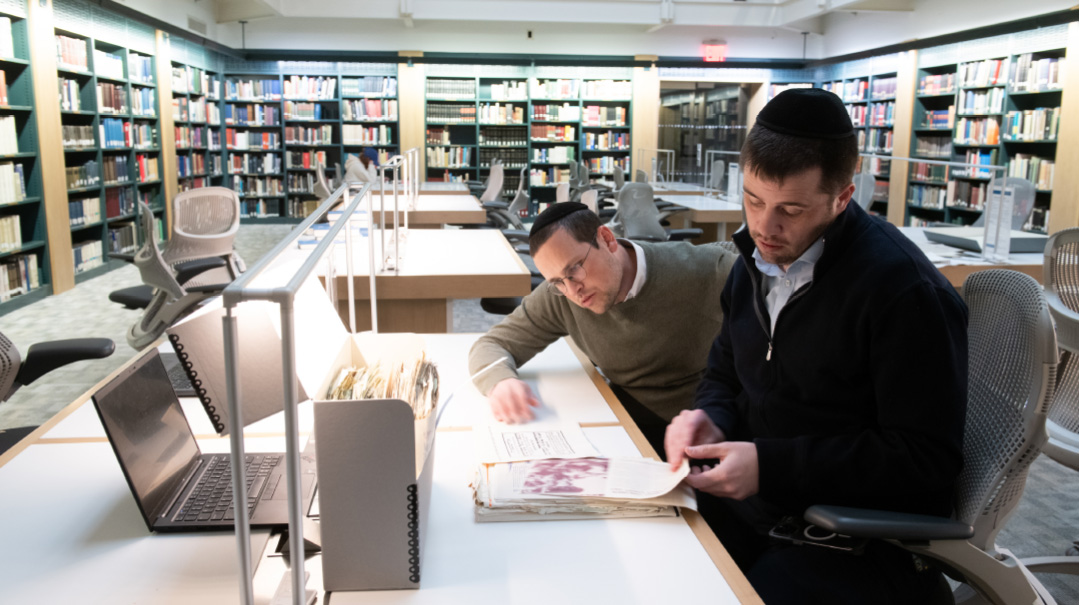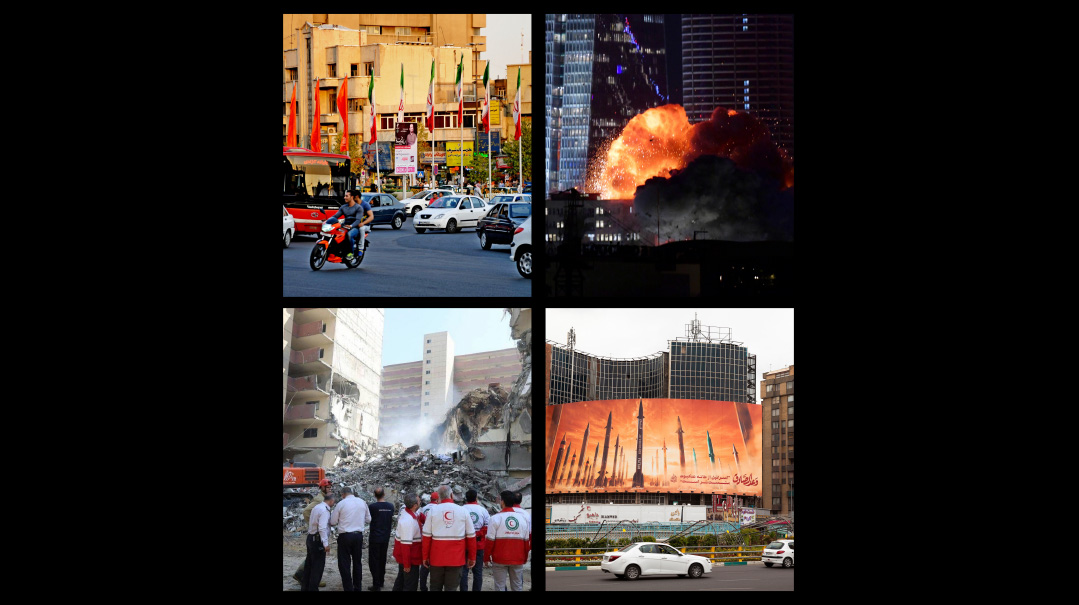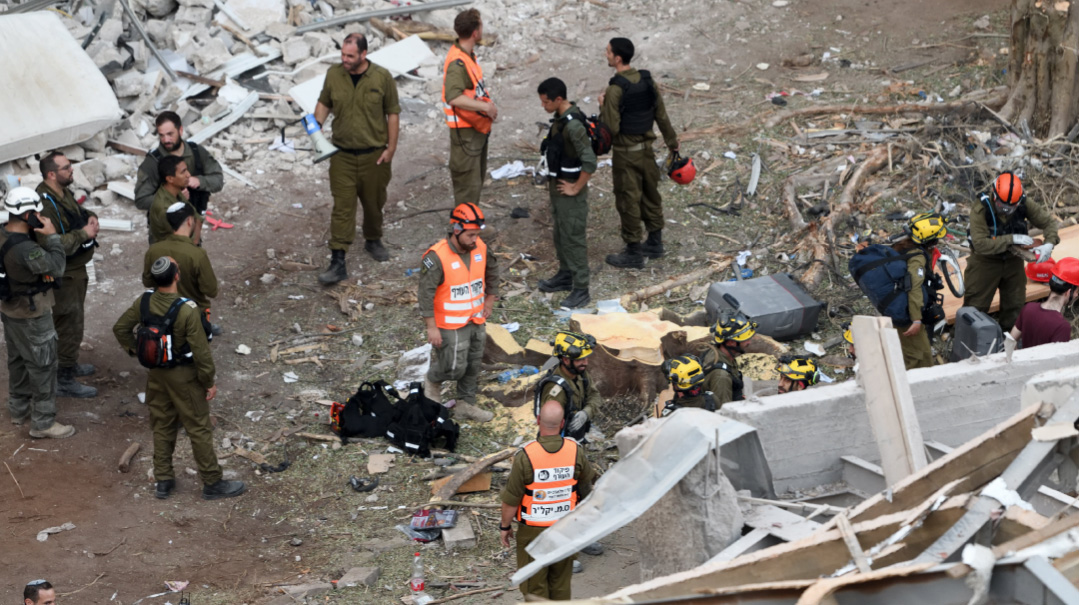Crystal Clear
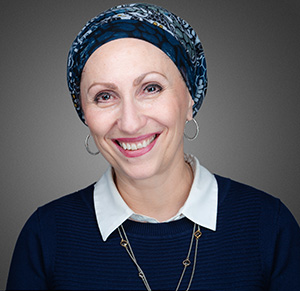
Lavi Greenspan went blind at age 26, but the challenge opened new vistas that he hadn’t seen before
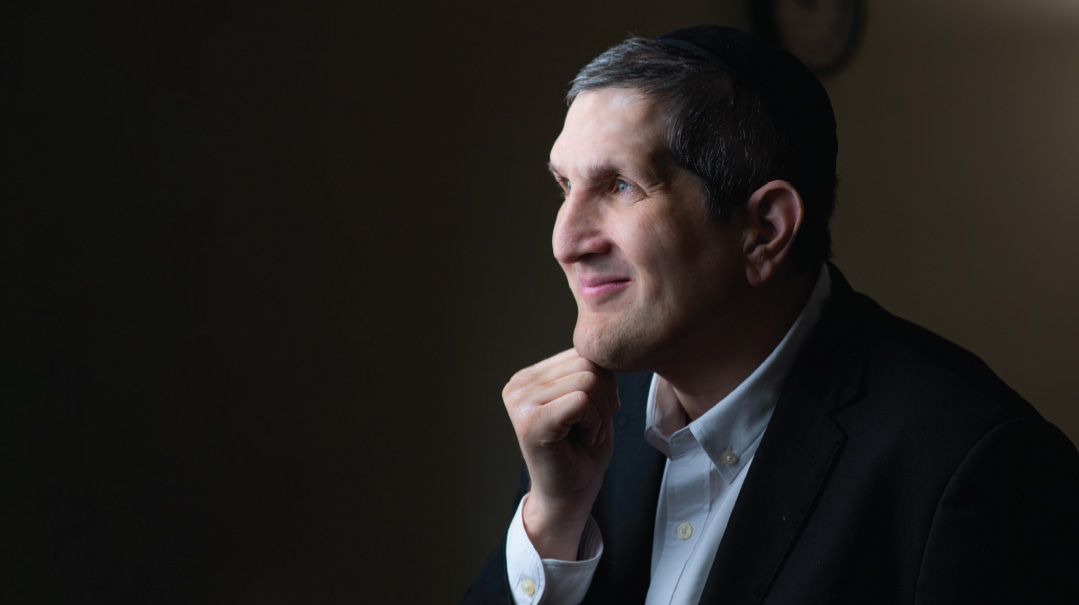
Photos: Naftoli Goldgrab
Imagine a 26-year-old single man poised to begin a legal career and a semichah program who suddenly learns he needs a major operation — and then another.
And another and another. One complication creates another, requiring yet more surgery. And when the disease finally abates, he’s left without any sight.
Lavi Greenspan, now 51, has spent half his life as a sighted person, and almost half his life without sight. It hasn’t been an easy path. Yet he’s doggedly maintained a positive outlook and unflagging emunah, and his ahavas Torah, ability to connect with others, and overflowing ahavas Yisrael have made him a magnet for Jews in search of chizuk and inspiration. When he and his bashert, Nechama, were married this past November, after decades of searching, the guests included Rav Herschel Schacter, Rav Yerucham Olshin, Rabbi Dovid Breslauer, Rabbi Mordechai Kamenetsky, and Rabbi Moshe Katzenstein, in addition to hundreds of Lavi’s “best friends.”
Lavi and Nechama have moved into a two-bedroom apartment in Kew Gardens Hills, but since he has a regular Sunday chavrusa in Brooklyn, we meet at my home. Nechama drove him in, and sits with us as we speak.
A solidly built man of medium height, Lavi is clean-shaven and dressed in regulation yeshivish black pants and white shirt. He tells me a little about his childhood, in Hillcrest, Queens, with his parents, brother, and sister. His father was a social worker, and his Israeli-born mother went back to school once her children were grown to earn a law degree. Lavi attended Yeshiva of Central Queens for elementary school, followed by mesivta at Yeshivah of Flatbush, Keren B’Yavneh in Israel, then Yeshiva University, where he became close to Rabbi Yehuda Parnes, whom he considers his rebbi. When selecting a profession, he chose law, because it seemed a practical career path for a young Jewish man, and was accepted to Fordham Law.
During his first semester of law school, in the fall of 1994, he began feeling thirsty all the time — a symptom that is often indicative of diabetes. A doctor advised, “If the symptoms don’t go away in a month, come back.”
The symptoms didn’t abate, but it turned out there was nothing wrong with his pancreas. Ultimately, Dr. Alice Levine at Mount Sinai Hospital diagnosed Lavi with Cushing’s disease, caused by a benign growth on the pituitary gland, which created the diabetes-like symptoms. The tumor had to come out before it grew any larger, in a brain surgery that would take almost ten hours.
Lavi had never had surgery before and was so terrified that he needed an anti-anxiety pill. Rabbi Parnes was given permission to visit him afterwards in the ICU, despite hospital rules to the contrary, by telling the nurses he was Lavi’s rabbi. They only let him stay a minute, but seeing his rebbi’s face and hearing the words, “Lavi, I’m here for you,” were an immense comfort to him.
“My parents call him our angel,” Lavi says.
The surgery was deemed successful, yet a second operation was necessary to remove the remainder of the tumor — this one only six hours long — that proceeded through the nose. While it was also pronounced successful, two weeks later Lavi was unsure about the amount of fluid coming through the nose. The doctors determined he was leaking cerebrospinal fluid, which required another four-hour surgery through the nose. When he woke up, he thought he was still leaking. The doctors thought it was just dried blood, but when they later removed the dressings, they realized he was leaking cerebrospinal fluid again. Another six-hour, open-head brain surgery was required to address the problem.
When it was over, doctors told him that he would no longer have 20/20 vision, because the optic nerve had been touched, but the damage would be temporary. His vision did indeed return a few months later. But he couldn’t open his mouth fully when he ate, another consequence of the surgery. Yet another surgery — outpatient this time — fixed the problem, and he then had to undergo five weeks of radiation treatment, which fortunately went well for him — no nausea or hair loss. He took some time off from law school, returning in January 1996.
By 1997, two years after his first surgery, Lavi began to notice that his vision wasn’t what it should be. That August, on a trip to St. Louis for a friend’s wedding, he hit a garage wall with his car. Shortly afterward, while driving on the Van Wyck Expressway, he narrowly avoided an accident when he cut off another car that he just hadn’t seen. A visit to Dr. Joe Mindel, a neuro-ophthalmologist at Mount Sinai, confirmed that he’d lost vision in one eye, and would fully lose vision in both eyes.
After extensive research, Lavi’s parents found Dr. Scott Forman, a neuro-ophthalmology specialist affiliated with Westchester Medical Center, who recommended giving him hyperbaric oxygen treatments to preserve whatever eyesight was left. Lavi didn’t dwell too much on the prospect that he could still lose his sight completely.
“I was too preoccupied with law school and passing the bar,” he says.
Unfortunately, the hyperbaric treatments had to be interrupted one day when a nurse, doing a routine temperature check, found it to be 103 and wouldn’t let him go home. The fever quickly shot up to 105, and Lavi was diagnosed with meningitis, an occasional consequence of brain surgeries. He spent two days unconscious, and was transferred back to Mount Sinai for another operation. But the hiatus in the hyperbaric oxygen treatment caused his eyes to deteriorate further, and once back on his feet, he lived in fear that his vision might suddenly fail him unexpectedly.
The last thing he saw was the “Don’t Walk” traffic light as he walked from law school to Minchah one day. Then the curtain dropped. By Chanukah of 1997, Lavi was completely blind, and needed his father to guide his hand to light his menorah. He was one semester away from taking the bar exam.
Oops! We could not locate your form.

